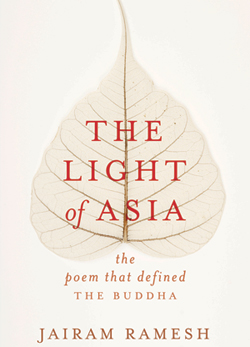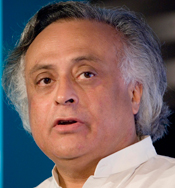A magisterial oeuvre that reads like a detective story
 A magisterial oeuvre on Sir Edwin Arnold’s famous poem in eight cantos, The Light of Asia, is an exhaustive and entertaining volume, bringing together far-flung threads to present a complete, compelling biography of the Victorian poem. The book was a beacon for men from D. H. Lawrence and James Joyce to Mahatma Gandhi and Pundit Nehru; it gave to the west its first and stirring gleanings of Buddhism; triggered a social revolution in India; and over the years was translated into 32 languages- touching countless lives with its Oriental poetry and spiritual message about the Buddha’s life and teachings.
A magisterial oeuvre on Sir Edwin Arnold’s famous poem in eight cantos, The Light of Asia, is an exhaustive and entertaining volume, bringing together far-flung threads to present a complete, compelling biography of the Victorian poem. The book was a beacon for men from D. H. Lawrence and James Joyce to Mahatma Gandhi and Pundit Nehru; it gave to the west its first and stirring gleanings of Buddhism; triggered a social revolution in India; and over the years was translated into 32 languages- touching countless lives with its Oriental poetry and spiritual message about the Buddha’s life and teachings.
A biographer of this poem–an idyll set in a romantic East capturing ancient Indian city, village and forest–would have to grapple with the same rather Sphinx-like nature that Sir Edwin Arnold warned of in a short poem called, To My Biographer:
Trace me through my snow,
Track me through my mire,
You shall never know
Half that you desire!
Praise me, or asperse,
Deck me or deride,
In my veil of verse
Safe from you I hide.
Consequently Jairam Ramesh, the author, had had to work through a galaxy of books in pinning down a portrait of the poem T. S. Eliot would as a boy ‘read with gusto, more than once’ and of which he said “when I meet anyone else who has read and liked it, I feel drawn to that person”.
The curtain opens for Sir Arnold in the late Victorian period when India was glinting in the imagination of the British like a Maharajah’s howdah or the grand Delhi Durbar (the first of which was held in 1877) and as timeless and mystic as Kim of Rudyard Kipling would evoke later. Queen Mary (Princess Mary of Teck then) was an example of the new British infatuation with India as a mystical realm. She would say (imitating Bloody Mary) “When I die, you shall find India engraved on my heart”.
It was moreover, a society that had already had had a taste (slight) of Buddhism coming from “the timeless Orient”. As Jairam Ramesh says astutely, “The Light of Asia chimed very well with Victorian concerns—in its perceived agnosticism and appeal to reason rather than ritual and in its verses that suggested that evolution, which Darwin had just then propounded, was a philosophy that had moulded the Buddha’s thinking.”
The book scrutinizes the background of the poem which takes us to Poona where Arnold (then plain Mr.) would be the principal of the Deccan College. Here he would be drunk with Sanskrit and India’s ‘antique wisdom’ which included her religions and her cultures.
Ramesh provides fascinating insight into what kind of books would have moulded Arnold’s mind in those days, for example using references in his letters to track down what books he might have read, leading up to The Light of Asia later.
After the Poona episode Arnold would come back home, where he was to work as a leader writer for the Daily Telegraph, accumulating quite a reputation for his ‘poetic prose’, tellingly with an “Oriental exuberance of epithets”. India was never far from his heart.

Jairam Ramesh
Ramesh is an indefatigable chronicler of Arnold’s life and times capturing much of the intellectual ferment that nourished him. One marvels at this bibliophile’s sleuthing into a world eclipsed almost one and a half centuries ago. It is a veritable guide to the Indophilia of the time. Ramesh minutely evokes the Indological scholarship headed by the likes of Max Muller, the natives awakening to their own indigenous literature and of course, the Theosophical circles then in a fledging state.
Predictably there is a fascinating quest as to the possible sources of The Light of Asia, from Jules Barthelemy St. Hilaire to works derived from Chinese and Burmese sources including The Romantic Legend of Sakya Buddha of Samuel Beal.
It was rather surprising that Arnold’s poem was a runaway success, from a man who had little reputation then as a poet; and caused “heartburn… amongst those who had spent years on the subject without having achieved… public admiration”.
The book depicts Sir Edwin Arnold as a Tory who, despite his antiquarian’s love for India and appreciation of its philosophies, never supported home rule for the subcontinent (or for Ireland) and thought that sati can be ‘sublime’ when ‘women with ordinary affections, ordinary habits of life’ were ‘suddenly lifted to a sublimity of passion—to the death—by an influence they were unable to repress or control’: a view that neglected that many women would rather live than immolate themselves.
He was adulatory of Victoria and it is said she in turn wanted him to be Poet Laureate after Tennyson, but this would not be approved as his writings were ‘too Buddhist’. She is said to have held on for more than three years till finally she had to agree to have Alfred Austin.
The book records the imprint of The Light of Asia down to all the doctoral dissertations written on the poem, the most minor stage productions and films and goes on to track some descendants of Sir Arnold, having come rather down in the world as Eurasians in Bhopal given that their antecedents were those of English gentry.
Riveting for Sri Lankan readers is the story of Anagarika Dharmapala (who was another ‘product’ of the poem) and his battle to have Buddha-Gaya handed over to Buddhists, a mission for which Sir Arnold toiled with sincere ardour.
The book is peppered with anecdotes that make the reading rather easy, apart from Ramesh’s suave and sleekly erudite style. Amongst them are how two “researchers and heritage recoverers” Benoy Behl and Bulu Imam, discovered a treasure of Buddhist and Hindu sculptures in Hazaribagh by following clues given in the poem, like in Conan Doyle’s The Adventure of the Musgrave Ritual.
Then there is the story how Andrew Carnegie, then the richest man in the world, was given the original MS of The Light of Asia and Carnegie’s love story with Louise Whitefield, of which the nucleus, curiously, was the long poem.
Ramesh’s book itself, one has to own, reads like a detective story. His zeal for the subject is such that the reader is forever curious of what Ramesh has uncovered. It is a work that deserves a special niche-a well researched and readable biography on a book.
The Light of Asia is now available at the Barefoot Bookshop, Colombo 3, priced at Rs. 2,650.


